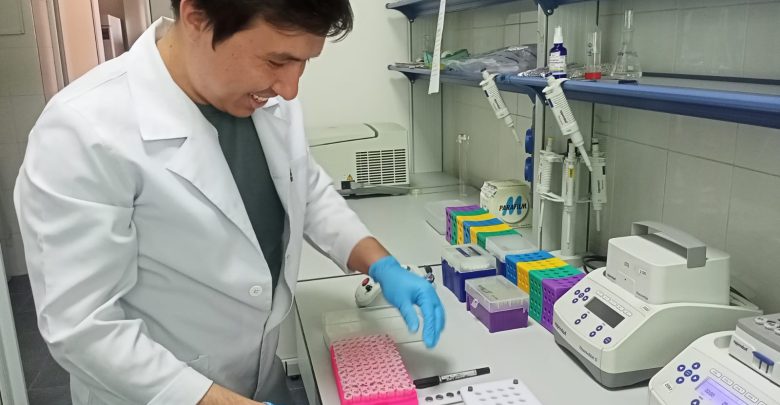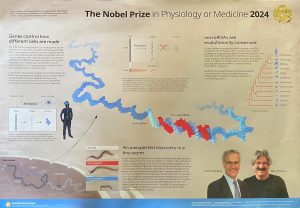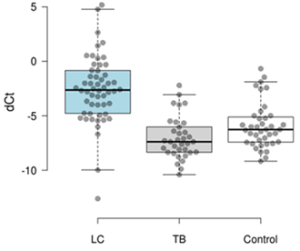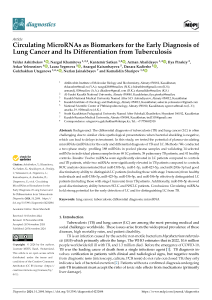Project: “MicroRNA as a marker for differential diagnosis of lung cancer and tuberculosis” (Aitkhozhin Institute of molecular biology and biochemistry)

MicroRNAs are short single-stranded non-protein-coding RNAs that function as negative regulators of most genes in the genome and participate in critical biological processes such as differentiation, apoptosis, proliferation, etc. For their discovery of microRNAs and their role in post-transcriptional gene regulation, Victor Ambros and Gary Ruvkun were awarded the Nobel Prize in Physiology or Medicine in 2024.
Because changes in microRNA concentration can reflect pathological processes, these molecules are considered promising biomarkers for various diseases. Furthermore, the fact that these molecules circulate in biological fluids offers the potential for developing minimally invasive diagnostic methods.
Tuberculosis and lung cancer are among the most pressing medical and social problems worldwide. Timely diagnosis is a key factor in the success of treatment. However, despite advancements in instrumental and laboratory diagnostic methods, difficulties in differential diagnosis often arise due to the similarity of clinical and radiological presentations of the two diseases, if the patient has no bacterial excretion. This leads to delays in diagnosis and, consequently, reduced treatment effectiveness due to the progression of the pathological process. These challenges provide a basis for the search for new, minimally invasive methods for the early and differential diagnosis of tuberculosis and lung cancer.
In this project, the applicability of circulating microRNAs as biomarkers for the differential diagnosis of lung cancer and tuberculosis was evaluated. The study results revealed that the levels of several microRNAs were significantly elevated in the blood plasma of lung cancer patients compared to both the control group and tuberculosis patients. In some cases, these differences were specific enough to consider these microRNAs as potential biomarkers for lung cancer. No potential microRNA markers for tuberculosis were identified.
Thus, it was concluded that circulating microRNAs hold significant potential for the diagnosis of lung cancer and the differential diagnosis of lung cancer and tuberculosis. To confirm the clinical applicability of these findings, further research is needed, particularly to expand the sample size and the range of analyzed lung diseases. Additionally, longitudinal studies will enable the evaluation of the prognostic significance of these biomarkers.
The main findings of the study were published in 2024 in the journal Diagnostics, which is ranked in the 1st quartile (Q1) in the Web of Science database https://doi.org/10.3390/diagnostics14232684. by Yeldar Ashirbekov, Nazgul Khamitova, Kantemir Satken, Arman Abaildayev, Ilya Pinskiy, Askar Yeleussizov, Laura Yegenova, Anargul Kairanbayeva, Danara Kadirshe, Gulzhakhan Utegenova, Nurlan Jainakbayev and Kamalidin Sharipov



 Каз
Каз Рус
Рус Eng
Eng



